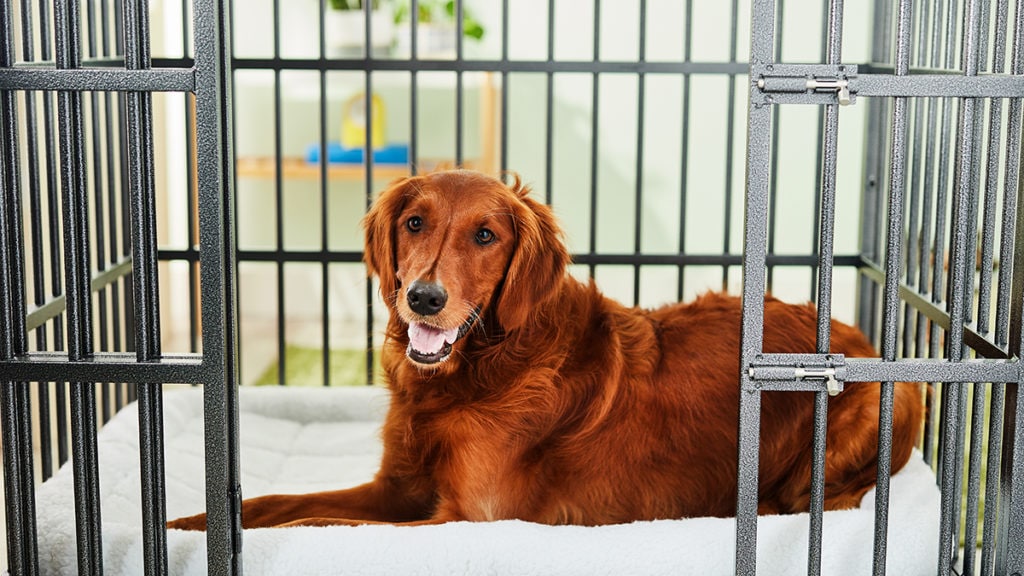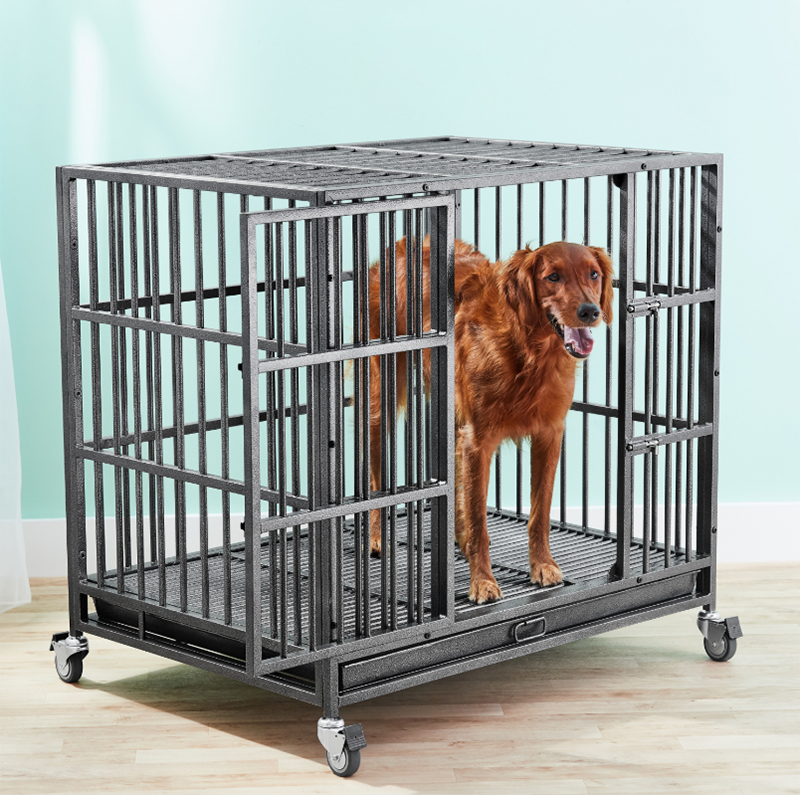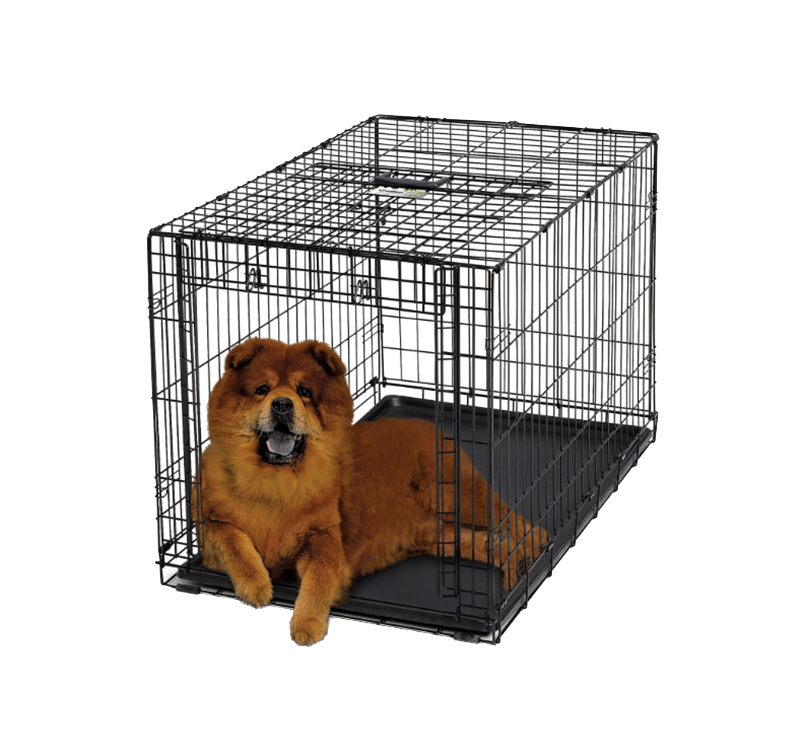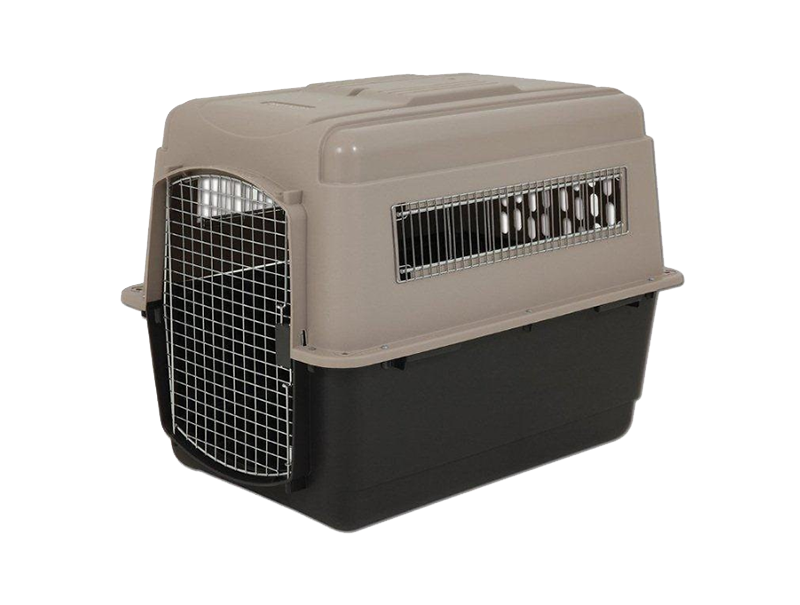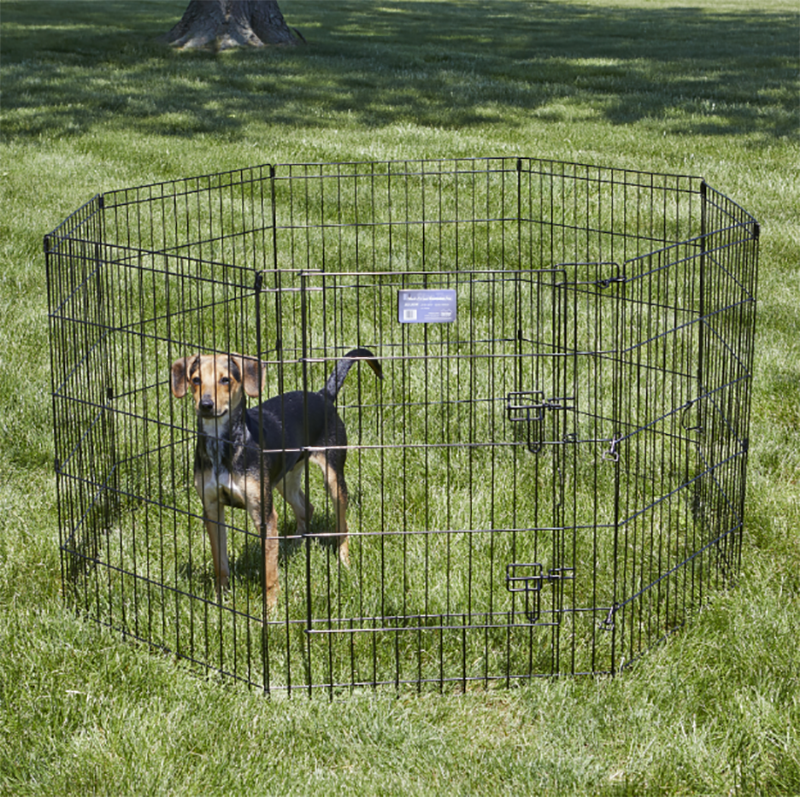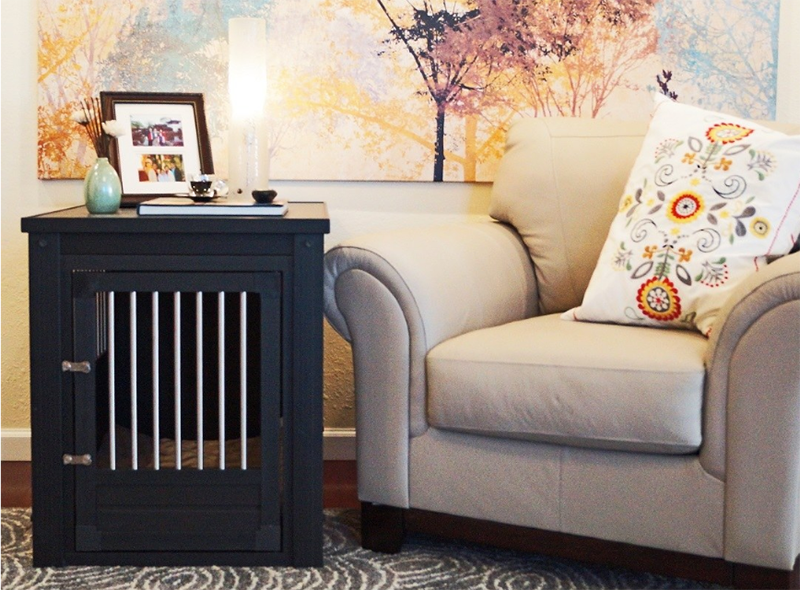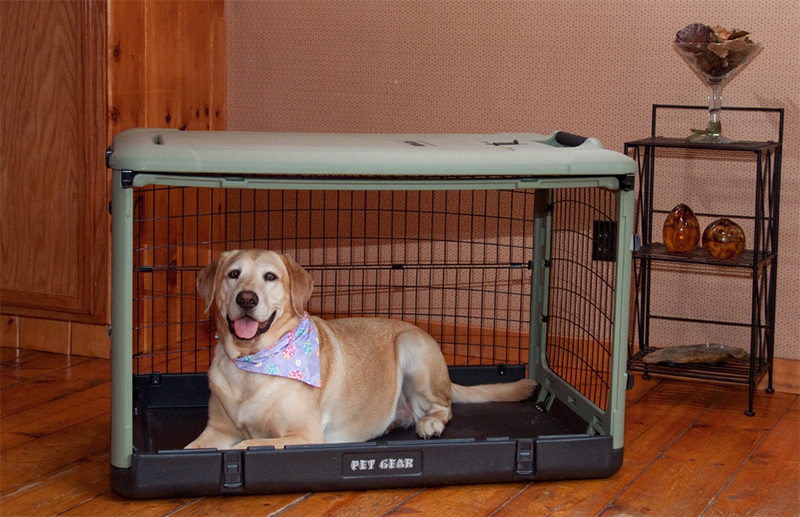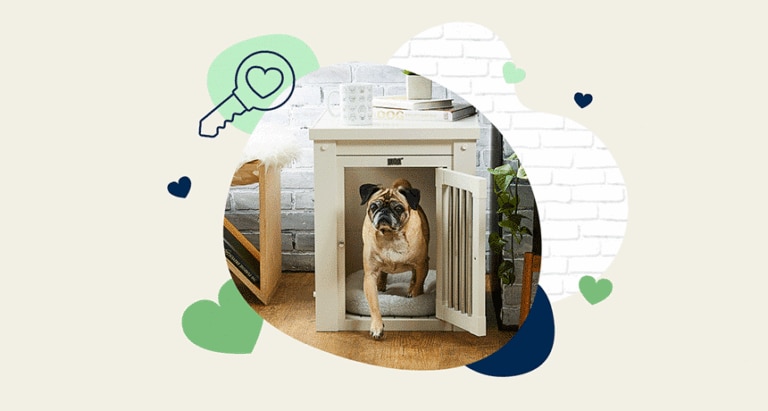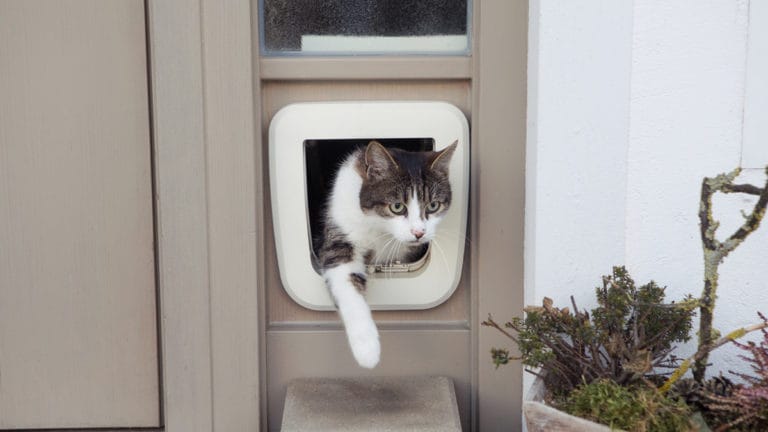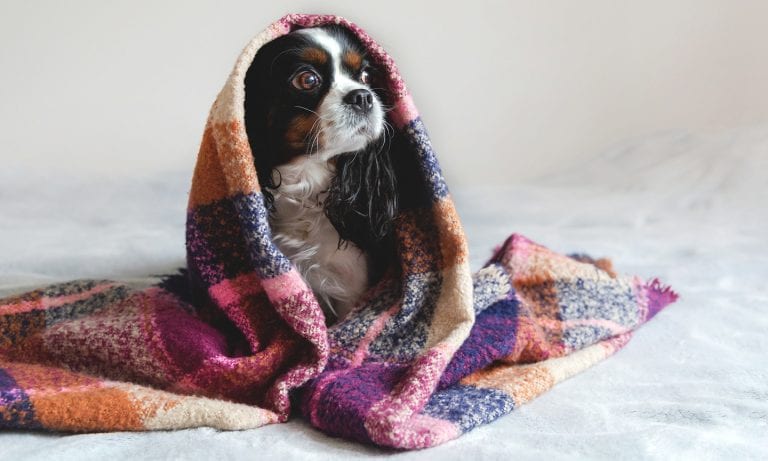Some dogs will stop at nothing to escape their dog crates. They’ll claw, they’ll chew, and they’ll somehow turn into little Harry Houdinis. This type of behavior can be frustrating and, at times, downright dangerous.
An escape-proof dog crate can give our four-legged pals a safe, cozy space to hang out in. Learn what to look for in an escape-proof dog crate, and check out these effective dog kennels for your pup.
Dog Crate Basics
It all begins with choosing the right crate for the job, says Deb Walker, CPDT-KA and owner of K9-Behavior Co. in Roseburg, Oregon.
“Pick a crate that fits the intended use for your dog,” Walker says. “For some purposes, a soft crate might do just fine; for a chewer or an escape artist, a plastic airline-type crate or crash-tested metal crate might be in order.”
Size-wise, Walker says to choose a dog crate that’s tall enough for your pet to sit and stand without hunching too much and long enough for him to lie down so his paws can be stretched out.
“If your dog will be confined there for a longer period, then a somewhat larger crate is in order,” she says. Get more tips on choosing the right size dog crate.
Most puppies 12 weeks and older will be OK for an hour or so at a time during the day and all night throughout the night, Walker says. Adult dogs can handle 2-3 hours at a time, provided they have a nice long walk beforehand.
“For dogs that have separation anxiety, crating them when you are not home is not a safe or good option,” she cautions. “It can make them have even worse panic attacks.”
6 Escape-Proof Dog Crates
Escape-prone canines need a heavy-duty dog kennel to keep them contained. Ideally, it should be made of steel, hard plastic or reinforced wire with sturdy hardware and locks.
“For the car, a crash-tested crate is the best, but they can be expensive,” Walker says. “For the house, a plastic crate or a wire crate or even a decorative wood crate is fine.
“If a dog is reactive, I prefer a plastic crate so his vision can be blocked a bit and he can feel like he’s in a comfy cave,” she continues. “For a dog that settles well when he can see out, a wire crate may be a good choice.”
If you’re looking for an escape-proof dog crate, check out these options:
1. Frisco Ultimate Heavy-Duty Steel Metal Dog Crate
Built for dogs who are prone to escaping from wire or plastic crates, this steel kennel is made with 22-gauge steel with half-inch-diameter steel tubing. Dual locks positioned outside the dog’s reach help keep the door securely shut.
This crate is designed with durable construction, including welding at all stress points and powder coating made to resist scuffs, dents, scratches, fading and rusting. Features include wheels, foot brakes and a grated floor with a slide-out metal tray.
2. MidWest Ovation Single Door Dog Crate
This dog crate is made with coated metal wire to help keep your dog safe and secure while giving him a view and good airflow. It features a sliding door that allows you to keep the crate open, a divider panel to adjust the crate’s size and a removable plastic pan for convenient cleanup.
3. Petmate Ultra Vari Kennel for Dogs & Cats
While not a traditional dog crate, this pet carrier is designed as a safe travel and crate-training kennel. This heavy-duty plastic kennel meets U.S. Department of Agriculture, International Air Transport Association and most airline requirements for shipping live animals.
It comes with easy-to-assemble hardware and is designed with an easy-open (for humans) squeeze latch, a metal door and side vents for air flow, and an interior moat to keep your pal dry. Tie-down-strap holes allow you to zip-tie the kennel together for added security during airline travel.
4. MidWest Exercise Pen with Step-Thru Door
For dog parents who want to keep their pups secure outside, this indoor-outdoor exercise pen features a secure double-latch door for security, and ground anchors and corner stabilizers to help the pen stay in place. The exercise pen is made with a black e-coat finish to protect it from rain, sun and other elements, and it folds flat for convenient storage and portability
The pen provides 16 square feet of enclosed area. Add an outdoor dog house, and your pet can lounge in the fresh air for hours.
5. New Age Pet ecoFLEX Crate & End Table
Designed to blend into your home’s décor, this end table/dog crate combo is made with eco-friendly wood and recycled polymer for easy cleaning. It features double-wall construction and a secure latching door to help keep pets contained.
6. Pet Gear’s The Other Door Steel Crate and Plush Pad
This heavy-duty plastic and wire dog crate is designed with strong, secure sides and steel inserts for extra reinforcement. Four doors—on top and three sides—let you set up the dog crate at any angle.
It includes built-in wheels and a pull handle for transporting your pal. Plus, there’s a color-coordinated plush bolster bed for added comfort.
Crate Training Tips
To teach your pal to love hanging out in his dog crate, try this training technique from Walker:
- Leave the crate open, sit in a chair in front of it and toss small dog treats inside, one at a time, so your dog can go into the crate, get the treat and come back out. Repeat 20-30 times in a session.
- When your dog stays in the crate because he knows that’s where he’ll get treats, reward and reinforce his decision by tossing him several treats while he’s inside.
- Next, use dinner kibble to play this training game, and then feed whole meals inside the crate. Divide his dinner into four or five portions, run to the crate with your dog, and when he gets inside, put the bowl of kibble into the crate. Repeat with the remaining portions.
- Start closing the door when you deliver the food and opening it when he’s done eating.
- When he’s ready, give your dog a stuffed Kong toy to chew on for longer but random periods of time. Try this DIY dog treat recipe for stuffing Kongs.
With a heavy-duty dog crate and some training tricks, you can teach your dog to like his crate. But if your pal needs some extra convincing, check out this article on dog crate training.
“And if you have a dog with separation anxiety, get professional help,” Walker adds.
By Wendy Wilson
Featured Image: via Chewy Studios
Share:
